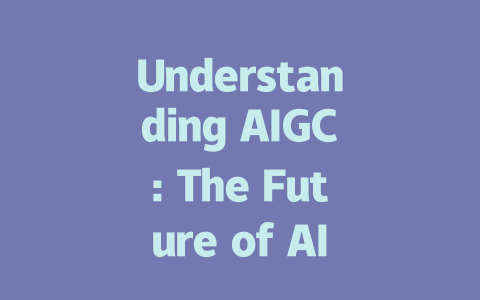
In recent years, the rise of Artificial Intelligence Generated Content (AIGC) has revolutionized various industries. Companies like Amazon and Baidu have harnessed AIGC technologies to enhance their services, streamline operations, and provide users with personalized experiences. This article explores the significant innovations in AIGC from these tech giants and highlights its impacts on the digital landscape.
Understanding AIGC
AIGC refers to the use of artificial intelligence to create content that can range from text, images, videos, to audio. Unlike traditional content creation, which relies heavily on human input, AIGC utilizes advanced algorithms and machine learning techniques to generate high-quality content quickly and efficiently. This not only reduces the need for extensive human labor but also allows for the rapid production of tailored content designed to meet user preferences.
Amazon: Pioneering AIGC in E-Commerce
Amazon has been a front-runner in integrating AIGC into its e-commerce platform. By leveraging AI technologies, the company has enhanced its product recommendation systems. This means that users receive personalized suggestions based on their browsing and purchasing history, significantly improving the shopping experience.
Moreover, Amazon’s use of AIGC extends to its AWS (Amazon Web Services) division, where it offers clients tools to generate content for marketing, advertising, and even customer service interactions. The ability to automate and personalize content at scale redefines the relationship between businesses and consumers.
Huawei: Transforming Communication with AIGC
Huawei has also made strides in AIGC development, particularly in the field of communication technology. The company has integrated AIGC into its products and services, enhancing user interactions with intelligent chatbots and virtual assistants. These AI-driven solutions provide real-time responses and personalized assistance, allowing users to navigate technical queries effortlessly.
Additionally, Huawei’s research in natural language processing (NLP) has paved the way for more sophisticated language models that generate content in various linguistics, catering to a global audience. This innovation not only supports international communication but also enhances user engagement across diverse markets.
Chengdu Shangyu Academy: AIGC in Education
Institutions like Chengdu Shangyu Academy are exploring the potential of AIGC in the education sector. By integrating AI technologies into their curriculum, they aim to create personalized learning experiences for students. AIGC can generate tailored educational materials, quizzes, and even interactive simulations, helping to meet individual learning needs effectively.
Furthermore, AIGC can assist educators by automating administrative tasks, allowing them to focus more on teaching and mentoring students. This shift enhances the overall educational experience and fosters a more dynamic learning environment.
Baidu: Leading the Charge in AI Research
Baidu, known as the “Google of China,” is another key player in the AIGC landscape. The company has invested heavily in artificial intelligence research, leading to significant advancements in deep learning algorithms and content generation technologies. Baidu’s AI tools can create articles, summaries, and even poetry, showcasing the versatility of AIGC.
The application of AIGC in Baidu’s advertising platforms has transformed how businesses market their products. Automated ad generation allows for hyper-targeted campaigns that resonate with specific audiences, ultimately driving higher engagement rates.
The Future of AIGC
As AIGC technology continues to advance, we can expect to see even more innovative applications across various sectors. From enhancing customer experiences to simplifying content creation, the potential for AIGC is immense. Companies like Amazon, Huawei, Chengdu Shangyu Academy, and Baidu are paving the way for a future where AI-generated content becomes an integral part of our daily lives, reshaping industries and redefining human interaction with technology.
In conclusion, unlocking the power of AIGC holds tremendous promise for enhancing productivity, creativity, and personalization across numerous domains. As we stand at the forefront of this technological revolution, embracing AIGC will likely lead to unprecedented opportunities and advancements in various fields.














暂无评论内容